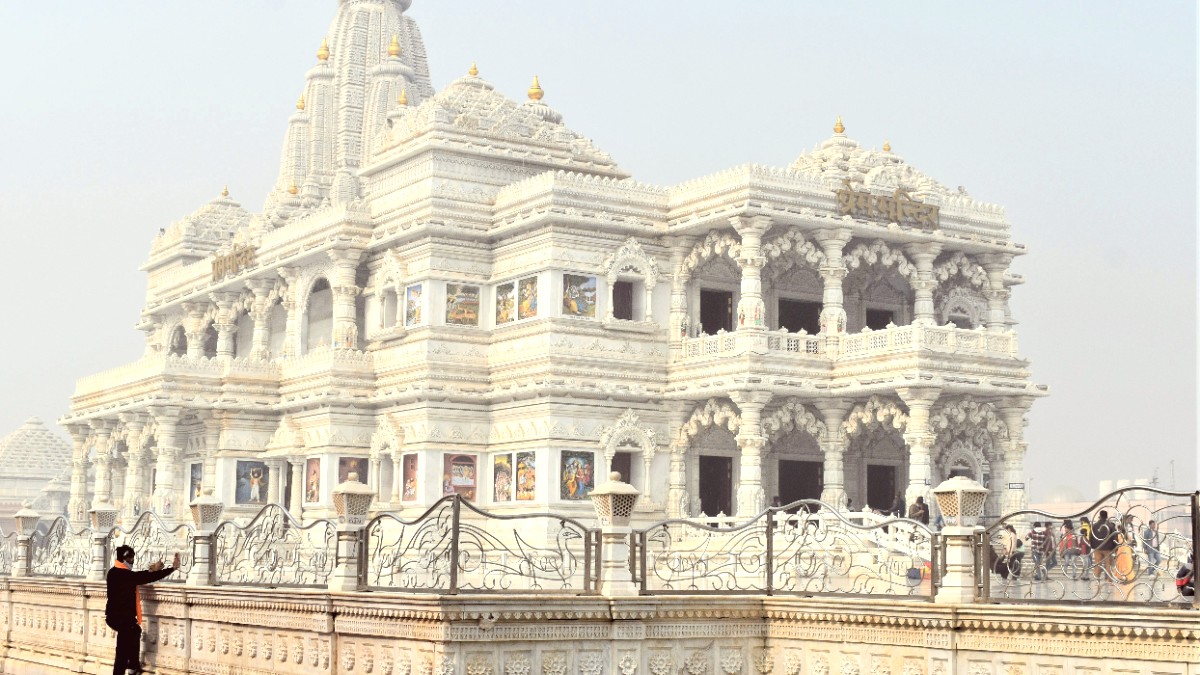
Uttar Pradesh, India
This guide readies you for your visit to Vrindavan. It shares clear, direct information on trip planning, practical aspects, and cultural understanding. Whether you seek spiritual peace, cultural absorption, or simply a novel experience, Vrindavan offers an unparalleled encounter. This guide facilitates your trip, creating a smooth and gratifying visit to this revered place.
Prepare for a deeply meaningful travel experience in Vrindavan. This guide will clarify your path.
Immerse yourself in devotion, history, and local life. Discover a destination unlike any other.
Vrindavan stands in the Braj region of Uttar Pradesh, India. It lies about 150 kilometers (93 miles) south of Delhi, the nation's capital. Mathura, another city with great religious weight and Krishna’s birthplace, sits approximately 10 kilometers (6 miles) to its south. The surrounding Braj landscape mostly comprises a flat alluvial plain, typical of the Gangetic basin. This fertile land has historically sustained farming, contributing to the pastoral images often linked with Krishna's tales.
The town itself is a dense area, marked by a close network of narrow paths, especially in its older sections. Contemporary structures, including larger temple complexes and improved services, spread outwards. While not a vast metropolitan zone, its spiritual importance draws a steady stream of pilgrims and visitors. Its close location to Mathura forms a dual stop for many, allowing simple exploration of both sites. The Yamuna River, despite pollution in urban stretches, keeps its sacred character, and its ghats (steps to the river) remain significant for ritual baths and quiet thought. The geographical setting, with its river connection and flat plains, has shaped Vrindavan's growth as a pilgrimage center, making access possible for devotees from many directions. Its placement within Uttar Pradesh makes it reachable from major transport hubs like Delhi and Agra, connecting it to wider North Indian travel routes.
Approximately 150 km (93 miles) south
Approximately 10 km (6 miles) north
Part of the flat Gangetic plain
Yamuna River flows by its banks
Accessible from Delhi and Agra
The Yamuna River, though often showing pollution in its city parts, holds its sacred character. Its ghats (steps leading to the river) remain important sites for ceremonial bathing and quiet contemplation. The river’s presence adds an unique spiritual dimension to the town’s landscape.
The older sections of Vrindavan feature a dense network of narrow, winding lanes. These pathways are central to the town's character and provide an unique exploration experience.
Modern structures, including larger temple complexes and enhanced services, are extending the town's edges. This growth aspires to meet the needs of increasing visitors while maintaining its core spiritual identity.
Vrindavan's setting, with its river connection and flat plains, historically influenced its growth as a pilgrimage center. This location makes access possible for devotees from various directions.
Vrindavan’s story intertwines deeply with Hindu mythology and spiritual beliefs, specifically the life of Lord Krishna. Ancient texts, especially the Bhagavata Purana, describe Vrindavan as the forest where Krishna spent his early years. Here, he carried out many divine acts, including playing with cowherd friends, enchanting the gopis (cowherd girls) with his flute, and overcoming various demons. These tales form the basis of Vrindavan's spiritual significance, positioning it as a sacred pilgrimage site for Vaishnavism followers, especially the Gaudiya Vaishnava path.
For many centuries, the town remained a thick forest, safeguarding the locations of Krishna's legends. Its revitalization commenced in the 16th century, largely attributed to the spiritual leaders Chaitanya Mahaprabhu and his followers, Rupa Goswami and Sanatana Goswami. These saints rediscovered many lost sites linked to Krishna's actions. Their efforts led to the building of numerous temples, beginning Vrindavan's change into a busy center of worship. Early temples, like the Madan Mohan, Govind Dev, Gopinath, and Radha Raman temples, display various architectural styles and mark different phases of the town’s spiritual re-establishment. Mughal emperors, notably Akbar, also extended support, allowing for the construction of some of these important early structures.
Centuries ago, Vrindavan was a dense forest, preserving the locations of Krishna's tales.
The 16th century saw the start of numerous temple constructions, marking a new phase.
The town grew into a melting pot of devotional paths, drawing people from all over.
As time passed, more temples, ashrams (hermitages), and ghats were built, each adding to Vrindavan's spiritual setting. The town became a gathering place for devotional traditions, bringing in saints, scholars, and followers from throughout India and beyond.
More than 5,000 temples, old and new, grace the landscape.
The sound of "Radhe Radhe" greets visitors at every turn.
Life centers on temple schedules, aartis, and numerous festivals.
Vrindavan offers a complete sensory journey. The air carries chants, incense, and local aromas.
The concentration of temples makes it a destination for spiritual seekers from all walks of life.
Vrindavan is a compelling place where a deep current of devotion runs through its very core.